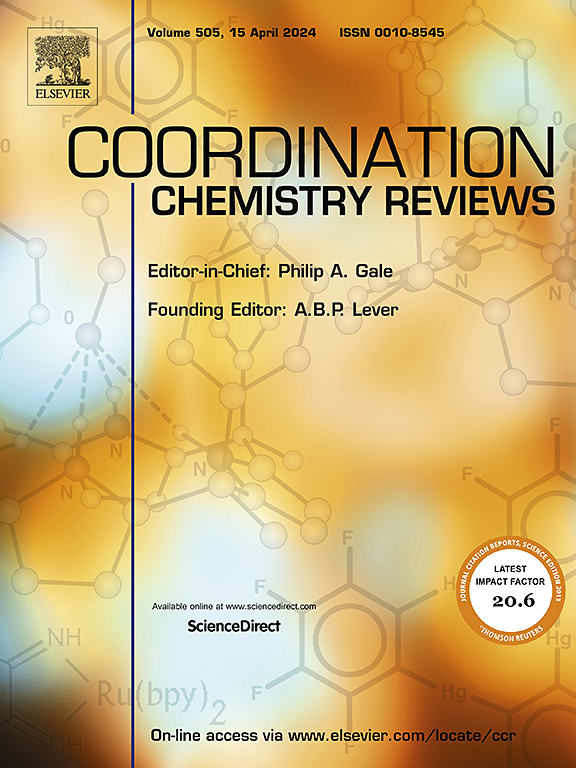Recent advances and prospective strategies for improving the performance of triboelectric nanogenerators
IF 23.5
1区 化学
Q1 CHEMISTRY, INORGANIC & NUCLEAR
引用次数: 0
Abstract
Triboelectric nanogenerators (TENGs) have gained significant devotion in the field of energy extraction and self-powered sensor development due to their unique combination of contact electrification and electrostatic induction. Over the past few years, researchers have made significant advancements in material synthesis along with device technology. This has led to the development of multiple methods, concepts, and theoretical analyses aimed at improving the TENG performance. This review delivers an inclusive overview of the research progress in enhancing the output performance of TENGs using various approaches. The overview covers four main aspects: surface material modifications of TENGs, structural engineering strategy, power management, and applications. Initially, this section provides an introduction to the fundamental principles, operational methods, theoretical framework, and material choices for TENGs. Additionally, the different surface modification and treatment methods for TENGs are categorized. Surface materials can be modified through different treatment methods, which are categorized into physical and chemical alterations. Next, we will explore various techniques to enhance the output power of TENGs using structural engineering methods. These techniques include employing multilayer structures, creating a TENG stack, and designing electrodes for TENGs. Furthermore, this text provides a summary of the current techniques used to enhance the efficiency of TENGs in terms of power supply, including power management and charge boosting. In addition, the assessment also discusses the use of TENGs in emerging fields involving wearable electronics, machine learning, artificial intelligence, and self-powered applications for sensors. Finally, considering the current advancement, we thoroughly analyze the significant issues and propose future research directions and challenges in a systematic manner.
摩擦电纳米发电机性能改进的最新进展与展望策略
摩擦电纳米发电机(TENGs)由于其独特的结合了接触通电和静电感应的特性,在能量提取和自供电传感器领域得到了广泛的应用。在过去的几年里,研究人员在材料合成和设备技术方面取得了重大进展。这导致了旨在提高TENG性能的多种方法、概念和理论分析的发展。本文综述了利用各种方法提高TENGs输出性能的研究进展。概述了四个主要方面:表面材料的改进,结构工程策略,电源管理和应用。本节首先介绍了TENGs的基本原理、操作方法、理论框架和材料选择。此外,还对不同的表面改性和处理方法进行了分类。表面材料可以通过不同的处理方法进行改性,分为物理改性和化学改性。接下来,我们将探索利用结构工程方法提高TENGs输出功率的各种技术。这些技术包括采用多层结构,创建TENG堆栈,以及为TENG设计电极。此外,本文还概述了目前用于提高TENGs供电效率的技术,包括电源管理和充电。此外,该评估还讨论了teng在新兴领域的应用,包括可穿戴电子产品、机器学习、人工智能和传感器的自供电应用。最后,结合目前的研究进展,系统地分析了存在的重要问题,并提出了未来的研究方向和挑战。
本文章由计算机程序翻译,如有差异,请以英文原文为准。
求助全文
约1分钟内获得全文
求助全文
来源期刊

Coordination Chemistry Reviews
化学-无机化学与核化学
CiteScore
34.30
自引率
5.30%
发文量
457
审稿时长
54 days
期刊介绍:
Coordination Chemistry Reviews offers rapid publication of review articles on current and significant topics in coordination chemistry, encompassing organometallic, supramolecular, theoretical, and bioinorganic chemistry. It also covers catalysis, materials chemistry, and metal-organic frameworks from a coordination chemistry perspective. Reviews summarize recent developments or discuss specific techniques, welcoming contributions from both established and emerging researchers.
The journal releases special issues on timely subjects, including those featuring contributions from specific regions or conferences. Occasional full-length book articles are also featured. Additionally, special volumes cover annual reviews of main group chemistry, transition metal group chemistry, and organometallic chemistry. These comprehensive reviews are vital resources for those engaged in coordination chemistry, further establishing Coordination Chemistry Reviews as a hub for insightful surveys in inorganic and physical inorganic chemistry.
 求助内容:
求助内容: 应助结果提醒方式:
应助结果提醒方式:


